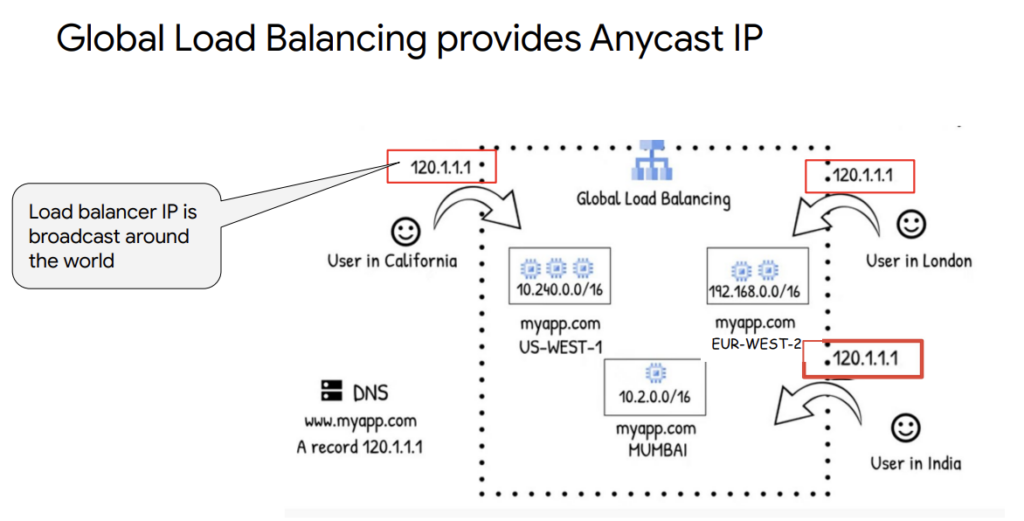Google Cloud’s HTTP(S) load balancing provides global load balancing for HTTP(S) requests destined for your instances. This means that your applications are available to your customers at a single anycast IP address, which simplifies your DNS setup. HTTP(S) load balancing balances HTTP and HTTPS traffic across multiple backend instances and across multiple regions.
HTTP requests are load balanced on port 80 or 8080, and HTTPS requests are load balanced on port 443.
This load balancer supports both IPv4 and IPv6 clients, is scalable, requires no
pre-warming, and enables content-based and cross-region load balancing.
You can configure URL maps that route some URLs to one set of instances and route other URLs to other instances. Requests are generally routed to the instance group that is closest to the user. If the closest instance group does not have sufficient capacity, the request is sent to the next closest instance group that does have capacity.
